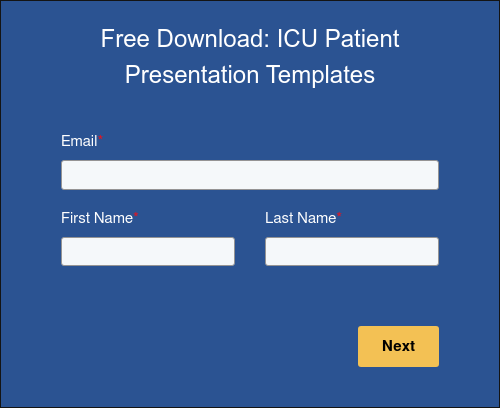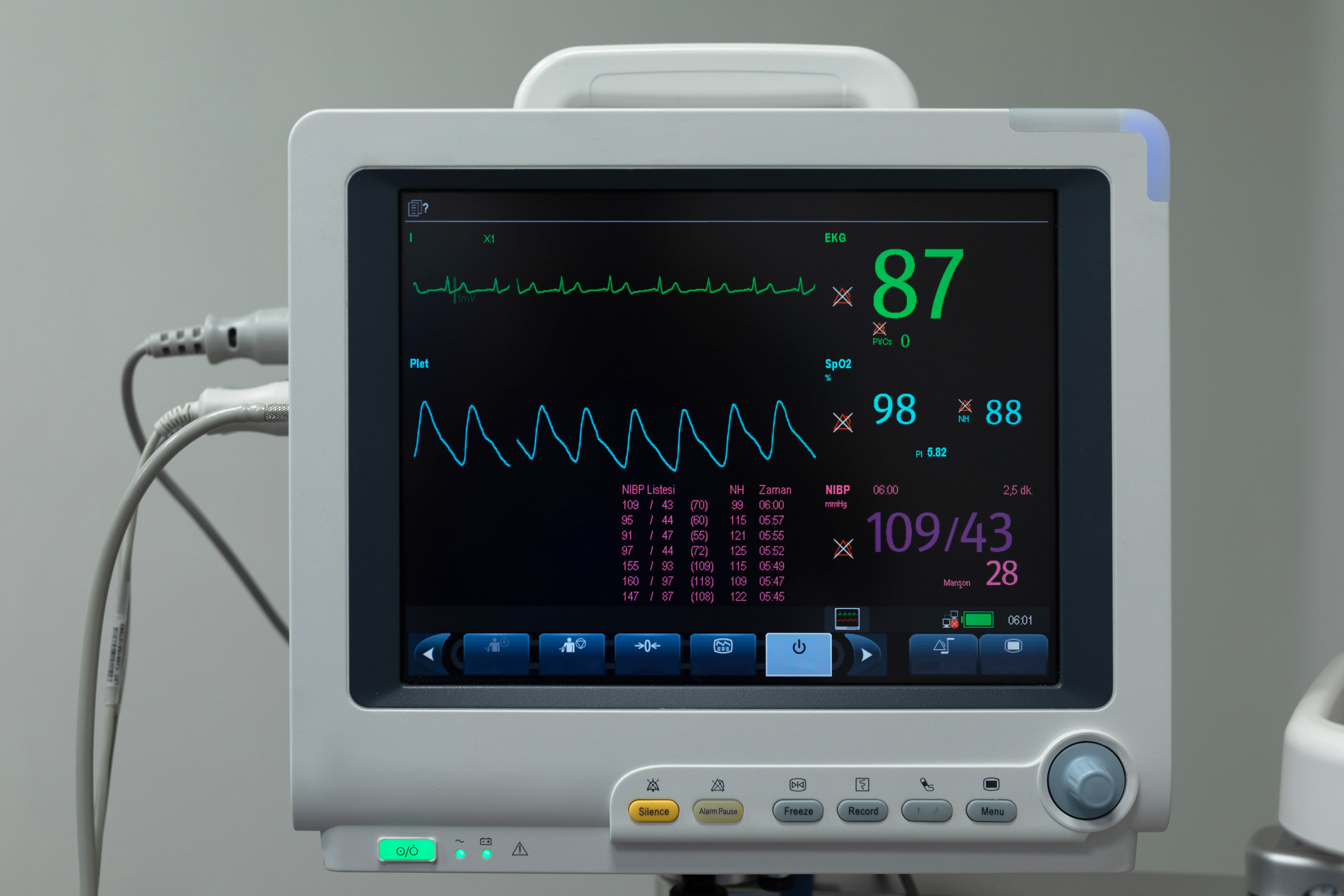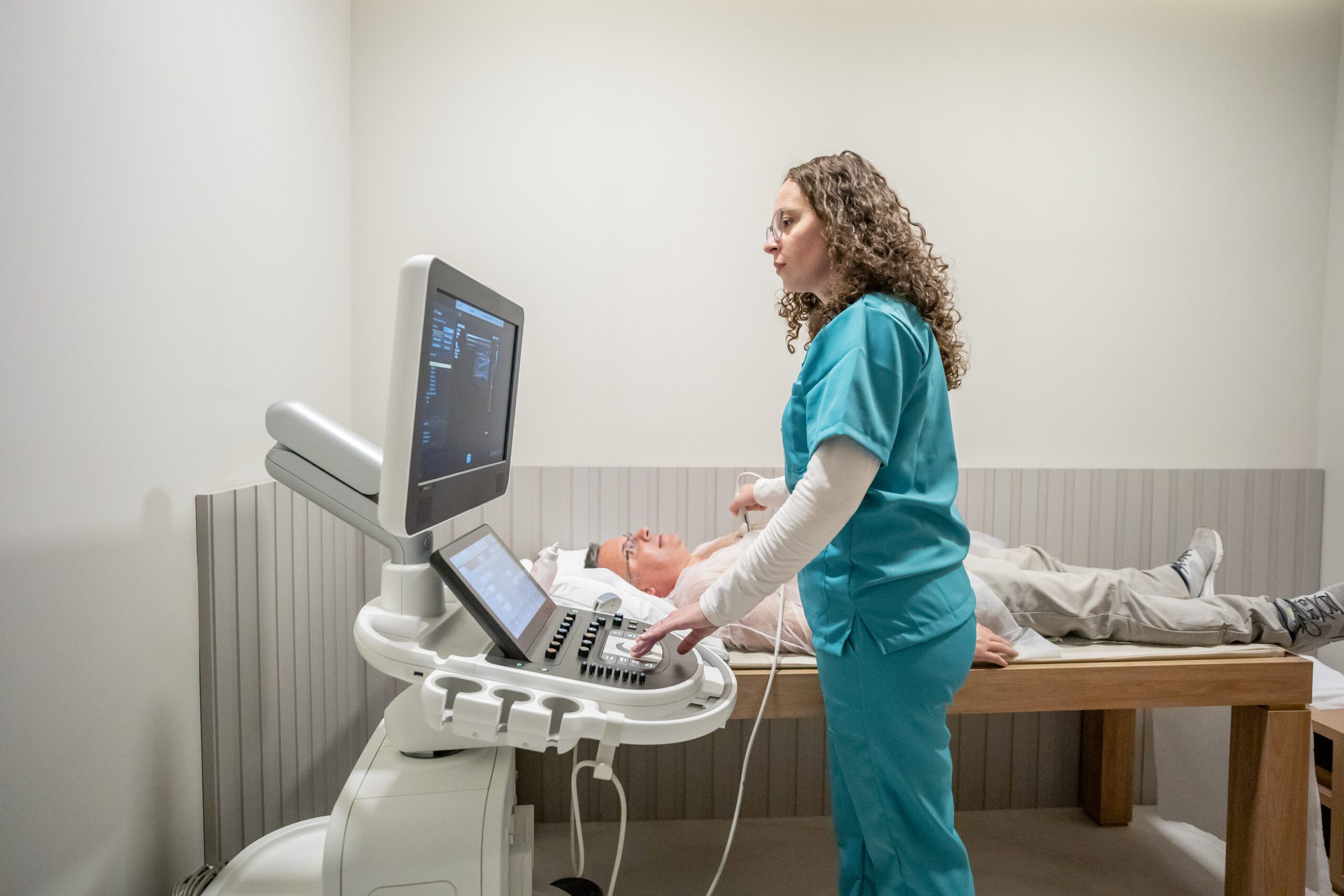The Intensive Care Unit (ICU) is quite a unique environment in the hospital, one where seconds and minutes can mean the difference between life and death.
If you’re on an ICU rotation, it may feel overwhelming. While you can typically help in some bedside procedures like placing an arterial line, one way to really shine during this rotation is to give a great patient presentation! By being comprehensive and thoughtful, you can demonstrate your critical thinking skills and ultimately give your patient the best care possible.
This blog is tailored to the ICU presentation and the associated systems-based plan. Check out this general patient presentation template for a problems-based assessment and plan!
Here’s what you need to know when it comes to giving an ICU presentation.
📘 FREE Download: ICU Patient Presentation Template
Want a customizable PDF to fill out during rotations? Submit the form and get our ICU Patient Presentation Template download sent right to your inbox…for FREE! 🤩
What to Include in Your ICU Patient Presentation Template: A Systems-Based Approach
To give you some background, ICU rounds are a lot different than other rounds you may be a part of. They tend to run longer as patients are critically ill, and there may be several aspects of their care that are coordinated during rounds.
The following list of what to include in an ICU patient presentation isn’t intended to be comprehensive, as that would require a whole textbook! And it may vary a bit if you’re in the medical versus surgical ICU. But it should give you a good starting point.In your ICU patient presentation template, be sure to include:
The One-Liner
This is a succinct piece of information to orient the team to the patient.
Include the patient’s name, age, post-op day number if they had a recent surgery, and why they are in the ICU/diagnosis.
Overnight Events
Include any notable events such as if intervention was required by a physician. For example, if a patient became hypotensive and required an additional vasopressor drip, or even a blood transfusion. Another example is the patient’s O2 sat becoming unstable and necessitating intubation.
Assessment/Plan
From here on out, you can jump into your systems-based assessment and plan (A/P). Some attendings may prefer for you to separately state the vitals, relevant labs, physical exam, and ins/outs before, but many will prefer for it to be embedded in the A/P.
Using a “head-to-toes” approach, we’ll proceed through each organ system in an organized fashion to make sure nothing is missed!
Taking it from the top, be sure to include:
Neurological
It can help to start with the Glasgow Coma Scale (GCS) of the patient. Be sure to add a “T” if the patient is intubated and remember the GCS can never be below 3!
Note any changes in a mental status and neurological physical exam. Also state if the patient is receiving any sedation like dexmedetomidine and the rate.
Then include an assessment of the patient’s pain level (if applicable) followed by what pain medications they’re on. Add if they received any PRN medication pushes. If they’re on a patient-controlled analgesic, mention how many times they’ve pushed the button. Suggest necessary next steps like changes in medications/drips, imaging, or a consult if needed.
Cardiovascular
Discuss the patient’s heart rate along with the blood pressures/mean arterial pressures (MAP). (The MAPs are applicable when the patient has, for example, an arterial line.) Include the current rates of any vasopressor, vasodilator, and inotrope drips.
Based on the information you have, determine if the patient is in shock and if so, what type. Report on any diagnostic findings like EKG/echocardiography and cardiac labs like troponin and BNP if relevant. Similar to the neurological plan, suggest (for example) if the drips can be weaned and if any further workup is required.
Pulmonary
Ventilators tend to be a big part of ICU management. Begin with a summary of how the patient reports their breathing (if they’re verbal). Any shortness of breath or heavy secretions?
If the patient is on a ventilator, review the current settings: ventilation mode, respiratory rate, tidal volume, PEEP, and FIO2. Include a recent arterial blood gas if available and how the patient’s oxygen saturation is. Report how the patient’s latest chest X-ray looks and if there are any chest tubes present, their outputs.
Plans for the pulmonary system include possible extubation, oxygen support adjustments, respiratory therapy, medication changes, and diagnostic testing like bronchoscopy or imaging.
Gastrointestinal
In this section, discuss any abdominal related diagnoses or surgeries. Update the patient’s current nutrition status: per os (oral) intake, total parenteral nutrition, or nil per os (NPO). State if the patient has any abdominal pain and if they’re having bowel movements.
Go over pertinent positive or negative lab values like liver function tests. Report the outputs and color if there are any abdominal drains. For a plan, you may suggest an abdominal X-ray if the patient is not passing gas, medications to treat diarrhea versus constipation, or management of a nasogastric tube.
Genitourinary
Discuss if the patient is having any pain or difficulty urinating. Be sure to check if the patient has any swelling in their legs to assess volume status. A measure of the jugular venous distension can also aid with this.
This is a good place to report the ins/outs for the past 24 hours. Also report the urine output, often stated as milliliters/kilogram/hour. Include relevant labs like electrolyte abnormalities or creatinine as a measure of kidney function.
If the patient is on continuous renal replacement therapy (CRRT), check the settings and suggest if any modifications are required based on volume status. For example, if the patient is volume overloaded, the CRRT machine can pull more volume off.
Possible plans include removing the Foley catheter, suggesting dialysis changes, changing fluid rates, obtaining imaging or urine cultures, and consulting the nephrology service.
Hematology
As before, begin with a subjective report. Does the patient notice any bleeding or fatigue?
Important objective information to report includes the trends in the hemoglobin/platelets/INR/PTT/PT and if there have been any blood transfusions.
Suggest if the patient requires a change in anticoagulation regimen, diagnostic testing, or a transfusion.
Infectious Disease
This is a good time to discuss if your patient has a fever and if so, its trend. Also, be sure to go over white blood cell labs along with possible antibiotics, infectious disease recommendations, and blood/urine/wound cultures.
To shine in this section, suggest if you have a source for any infections of unknown origin. Does the patient need a line holiday?
Endocrine
Report if the patient has any overall fatigue and sensations of heat or coolness. Comment on blood glucose levels and TSH if applicable. Be sure to correlate glucose with the patient’s diet status.
As part of your plan, state if the patient needs insulin or any diagnostic workup for endocrine abnormalities.
Musculoskeletal
Note if the patient has any joint or muscular pain. Any imaging results or orthopedic surgery recommendations are helpful to add. In your plan, add if physical or occupational therapy needs to be onboard for rehabilitation.
Prophylaxis
Towards the end, summarize the different prophylaxes the patient is on. For example, to prevent deep venous thrombosis, state if the patient is on anticoagulation and/or has sequential compression devices in place. If the patient is about to undergo surgery, it can help to say that anticoagulation was held. Also mention if the patient requires gastrointestinal prophylaxis like with a proton pump inhibitor.
Disposition
Conclude your presentation by stating what requirements the patient still has for ICU level care. For example, state if they’re in shock with pressor requirements, or have continued ventilator needs. If stable, perhaps they can be transferred to the floor.

Looking for some help studying your shelf/Step 2 studying with clinical rotations? Try our combined Step 2 & Shelf Exams Qbank with 5,500+ practice questions—free for 7 days!
4 Tips for Your ICU Patient Presentation
1. There’s no need to rush.
The purpose of the ICU presentation is to convey critical information in an organized fashion so it can be understood by the whole medical team. When you’re starting out, it may feel quite long.
Don’t worry—ICU rounds tend to run longer because the patients require such high-level care and it’s better to be comprehensive and efficient than to rush through rounds and miss something.
Once you get the hang of the format, you’ll notice the speed starts to pick up.
2. Focus on the most critical information.
Given the length of the ICU presentation, it’s best to focus on pertinent positives and negatives. For example, subjective responses are not always needed if they don’t add any valuable information. Listen to the presentations of others on rounds to determine what information is critical and what can be left out.
3. Organize information by system.
Focus on organizing information by system. For example, spinal and biliary drain outputs should be reported in the appropriate section: neuro and gastrointestinal, respectively. Do the same with lab values.
4. Take all systems into consideration.
One key recommendation is to critically think about your patients.
The nature of ICU work allows one to truly understand the relationships among all the organs. Even though we separate the A/P into distinct systems, remember the body is all interconnected.
For example, why is a patient in shock? Is it a cardiac or septic shock pattern? As such, why might one pressor be better than another to maintain perfusion? The ICU Book by Dr. Paul Marino is a great resource for in-depth information.
Example ICU Patient Presentation Template
This is a shorthand template of the ICU patient presentation. Think of it as a starting point with some primers of what to cover in each section.
There is no ideal ICU presentation template, as it will vary between patients and even attendings. Adjust the template below to best fit your needs. It has the basics for each system and not all the bullets may apply.
Psst…don’t want to copy-paste this into a new doc? Scroll back up or click here to get the FREE download of the template for you to print and fill out on rotations!
One-liner:
Overnight Events:
A/P:
Neurological
o GCS ___
o Neuro/Mental status exam changes
o Sedation drips
o Pain medications, PRNs
o NSGY plans
Cardiovascular
o HR ___ MAPs ___ SBP range ___
o Pressors/Inotropes
o EKG/Echo
Pulmonary
o Intubated?
o Vent mode _____ RR ___ Vt ___ PEEP ___ FIO2 ___ O2 sat ___
o ABG (pH ___, CO2 ___, O2 ___, Bicarb ___)
o CXR
o Chest tube outputs
Gastrointestinal
o Diet
o BM
o LFTs
o Drains
o Bowel Reg
Genitourinary
o 24 hr I/Os
o Renal fxn (BMP)
Hematology
o CBC
o Blood products received
Infectious Disease
o WBC
o CRP
o Abxs
o Sources, Micro Cx
Endocrine
o Glucose
o Insulin
Musculoskeletal
o Ortho
o PT/OT
Prophylaxis
o SCD
o SQH
o PPI
Disposition
Abbreviations:
A/P: Assessment/Plan
GCS: Glasgow Coma Scale
PRN: Pro re nata
NSGY: Neurosurgery
HR: Heart rate
MAP: Mean arterial pressure
SBP: Systolic blood pressure
EKG: Electrocardiogram
RR: Respiratory rate
Vt: Tidal volume
PEEP: Positive end expiratory pressure
FIO2: Fraction of inspired oxygen
ABG: Arterial blood gas
CXR: Chest X-ray
LFT: Liver function tests
BM: Bowel movements:
I/O: Ins/Outs
BMP: Basic metabolic panel
Fxn: Function
CBC: Complete blood count
WBC: White blood count
CRP: C-reactive protein
Abxs: Antibiotics
Cx: Cultures
PT: Physical therapy
OT: Occupational therapy
SCD: Sequential compression device
PPI: Proton pump inhibitor
SQH: Subcutaneous heparin
Final Thoughts on ICU Patient Presentations
I wish you the best of luck as you embark on your ICU rotation! This is one of the most fast-paced learning environments, so be a sponge and absorb as much as you can! Use this ICU patient presentation template, and you’ll be sure to give a great presentation that impresses your team and results in quality care for your patients.
Looking for more (free!) content to help you through clinical rotations? Check out these other posts from Blueprint tutors on the Med School blog:






